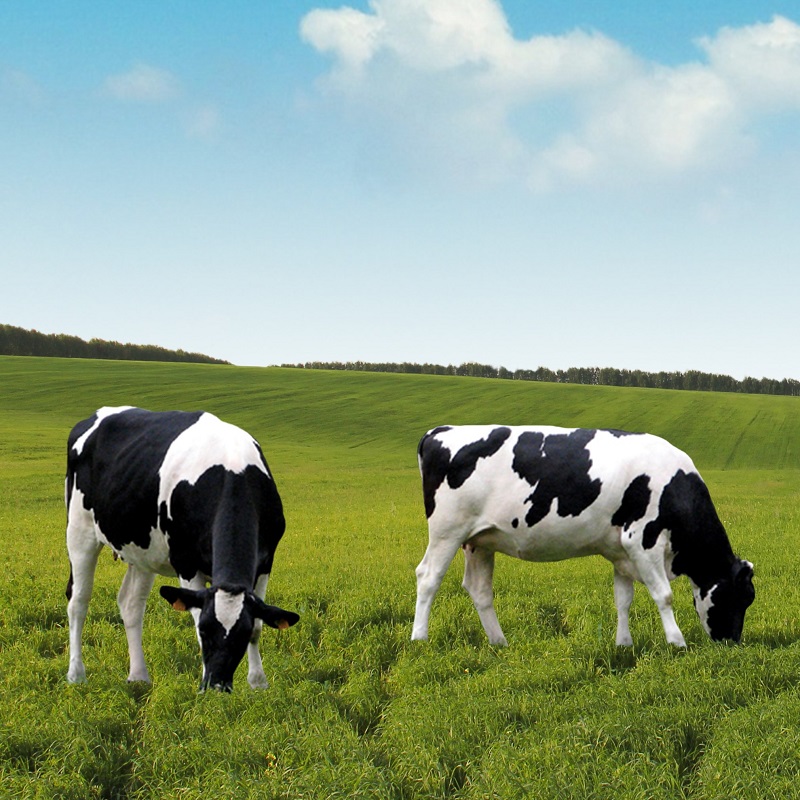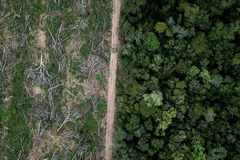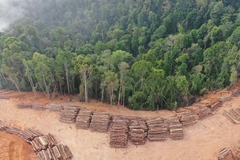“Nature-positive” dairy: FrieslandCampina and Danone tie-up sees 17% greenhouse gas emission reduction
28 Jan 2022 --- Cows bred to emit less methane and improved sources of feed are among the targets of FrieslandCampina and Danone in their extended three-year partnership centered on achieving net zero emissions.
To date, their collaboration has reportedly led to over 17% reduction in greenhouse gas (GHG) emissions, which further prompts the dairy titans to draw out their collaboration by another three years.
In addition to their climate goals, the joint initiative includes targets of improving soil health and biodiversity. One of the ways to achieve these goals is through regenerative agriculture practices, which the two companies hope to scale in the coming years.
“Continuing on this path first of all, we are well on track as we continue our gradual improvement through good agricultural farm practices,” Sanne Dekker, researcher environment impact assessment at FrieslandCampina, tells FoodIngredientsFirst.

FrieslandCampina highlights the potential to breed cows that emit less enteric methane from their stomachs and achieve year-on-year reductions.
“But other elements that we can add are also the use of feed additives, improved sourcing of feed – especially with regard to deforestation – making carbon sequestration measurable in a good way and upscaling manure digestion on farms,” she adds.

“Furthermore, we can explore smart breeding. There is potential to breed cows that emit less enteric methane from their stomachs and achieve year-on-year reductions.”
Industry links up to tackle a crisis
The two companies have a goal to reduce GHG emissions resulting from ingredients produced by FrieslandCampina and supplied to Danone by over 7%. This would result in almost a 25% GHG emission reduction over the course of the multi-year collaboration.
FrieslandCampina used the Annual Nutrient Cycling Assessment to track progress resulting from the sustainable farming practices. This extensive monitoring tool is used by almost 10,000 FrieslandCampina member dairy farms and gives farm specific insights, such as the size of their carbon footprint.
“The carbon footprint module Annual Nutrient Cycling Assessment was initially developed by FrieslandCampina’s R&D department, but then transferred to Wageningen University [in the Netherlands]. In this way, the entire Dutch dairy sector could benefit and also it was assured that calculation rules were consistent within the Netherlands and independently determined,” says Dekker.
“The model was built in line with LCA standards such as ISO, IPCC, IDF and PEF. Data collection for ANCA is largely automated through links with other data sources, such as commercial data [e.g. on feed and milk], governmental data [e.g. animal numbers and parcel information], public data [e.g.soil maps] and advisory data [e.g. soil and feed samples],” she explains.
“In this way we relieve our farmers from extensive administrative burden, we avoid errors and we believe we have the highest data granularity globally on raw milk carbon footprint. Farm-specific and high-quality data are the key in our pathway to net zero GHG emissions. Furthermore, we have warnings in ANCA to avoid errors and run statistical tests on the results to identify errors.”
.jpg) The impacts from the measures implemented were tracked through the Annual Nutrient Cycling Assessment.Farmer action on climate goals
The impacts from the measures implemented were tracked through the Annual Nutrient Cycling Assessment.Farmer action on climate goals
Depending on the nature of their farm, dairy farmers can take different measures to reduce their greenhouse gas emissions.
Some examples of the measures taken are:
- More protein harvested from their own farm land, further reducing the impact from sourcing feed from far away.
- Optimizing the cow’s diet composition: Keeping a well-balanced nutritious diet that supports animal health and welfare, while reducing enteric methane emissions.
- Energy measures such as generating green electricity through use of solar panels, windmills and manure digesters; or avoiding fossil fuels through bio-based diesel and/or reducing energy use – for instance, by recovering heat from milk cooling. In addition, the manure digesters not only generate renewable electricity but also help to reduce methane emissions through manure storage. This green energy is also used for FrieslandCampina’s production locations.
Net zero and “nature-positive”
Even with the initiative showing much promise, Dekker concedes there are all kinds of elements at play that influence farmers’ results.
“For instance, there is not one size that fits all. What works as a solution for one farm can work differently at another for instance, because the farm has a different soil type, or the breed of the cows is different,” she remarks.
“But it also depends on the local or financial situation of the farm or the interest of the farmer. For example, a farmer may want to reduce their fossil fuel use and generate more renewable energy with windmills, but the local authorities don’t allow it. Furthermore there were several very dry summers impacting the results too.”
Yann-Gaël Rio, Danone’s global vice president for nature & agriculture, adds: “Sustainable dairy farming is a key priority in Danone’s journey to achieving net zero emissions. While this is a great step, there is more to be done, and we are looking forward to supporting more farmers in their transition by extending this partnership for an additional three years.”
While the dairy sector races to offset its climate impact, the milk alternatives space has been teeming with innovation. Even Danone holds a significant stake in this sector, with the company’s North American division’s recently launched competition challenging start-ups to improve the texture and melting properties of plant-based cheese.
By Benjamin Ferrer












